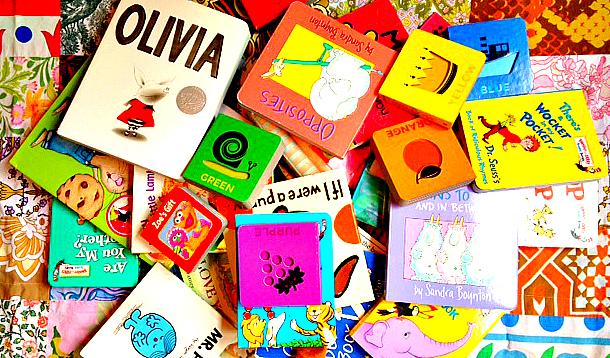
We're all trying to live a life less cluttered. That means keeping the stuff that matters most, and getting rid of the rest.
Still, it's tough to be a double major in both minimalism and parenting. Kids come with stuff: lots of it.

In the 21st century, technology has some of the answers. You can trade in some the “stuff” in your home for data storage. iTunes holds our personal music. Facebook and Instagram house our life in photos. Netflix has become our movie collection. You can even get the latest copy of Today’s Parent on an iPad.
So what about books?
When it comes to organizing the clutter in your home, the first rule of thumb is to get rid of what you don’t need or use. Books are an obvious example. Books take up massive amounts of space, collect dust, are heavy to move, and can often be one of the least used items in your home (Are you doing much browsing in your Grade 12 Algebra text these days?).
In October 2012, e-books represented 16.3% of book sales in Canada.
Even our libraries are catching up.
The evidence encourages us to consider donating all of our books, immediately.
But what about children’s books?

I asked Peter Birkemoe, owner of Toronto’s Little Island Comics whether his business is seeing the growing e-book trend when it comes to children’s books and comics.
Peter said “We aren’t yet seeing the impact of digital books on early years materials, given that people of this generation give physical books as gifts. I don’t think a measurable impact will be seen for many years. The tactile appeal and colour in children’s books is something that the digital experience has not yet been able to capture.”
A search for “children’s e-books” currently returns over 400 pages on Amazon.
Little Island Comics’ Store Manager, Andrew Woodrow-Butcher, was similarly un-phased by the e-book trend: “The way that children browse for books is much different than the way that adults browse: they don’t have credit cards for online shopping, so they need that physical experience of going into the library, or coming into Little Island Comics to see what catches their eye. Moreover, books are still items that are passed on, and often survive longer than the homes we live in.”
Academia is looking at the “book experience” issue, too, with mixed conclusions. A May 2012 study found that parents prefer reading print books with their children. However, a January 2012 study found that children prefer e-books to print books.
Little Island Comics’ Store Manager, Andrew, also spoke about a printed book as being an experience in time. The way that it currently exists (errors, scribbles, torn pages, and chewed edges) will last “forever.”
While we were visiting Little Island Comics, my one-year-old daughter was using her tiny hands to explore the colourful book spines poking out of every shelf. She was smiling, and pointing excitedly to the pictures and colours that caught her eye.
Perhaps children’s books, in all of their crayon-covered, corner-chewed, ripped, and utterly-loved-up-glory are part of the essentials of every family home—even an organized and minimalist one.
We left Little Island Comics with Pantone: Box of Colour, which includes 6 adorable mini board books featuring peek-a-boo cut-outs.

Minimalism in home organization is about keeping only the essentials, but organizing those well.
It was Albert Einstein who said “Everything should be made as simple as possible, but not simpler.”
And, in this case, he’s right.
